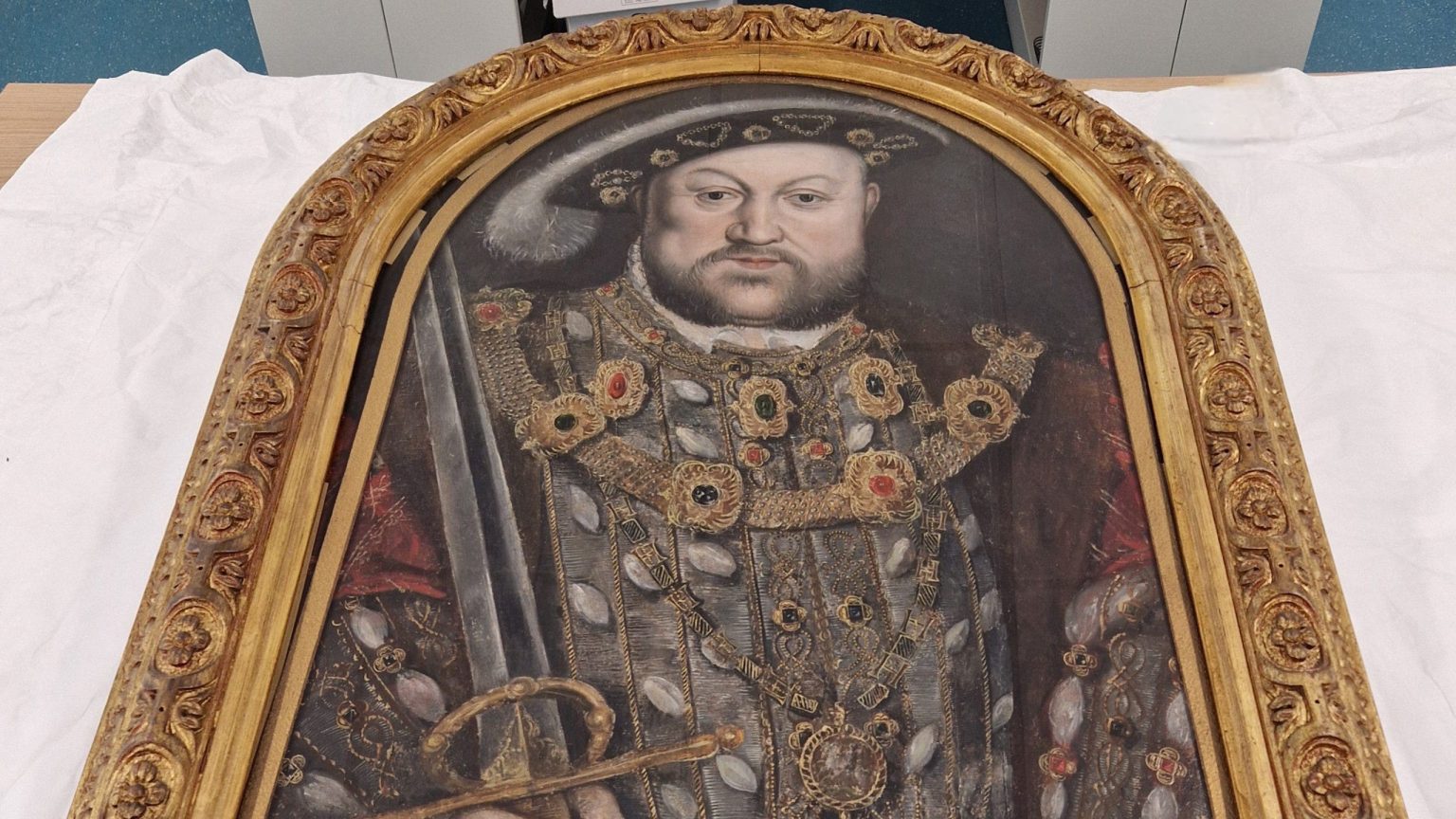British art historian Adam Busiakiewicz made a miraculous discovery in a photograph of a room in Warwick, England’s Shire Hall. He noticed a portrait of King Henry VIII that he believed to be part of a famous set commissioned by Ralph Sheldon around 400 years ago. This set is known for its round-topped frames, a unique feature not commonly found in portraits. After further research, Busiakiewicz confirmed that the portrait of Henry VIII was indeed part of the set of 22 paintings commissioned by Sheldon in the 1590s. Only a few of these original paintings are still known to exist today, with some housed in notable institutions like the National Portrait Gallery in London.
The discovery of the ancient portrait of Henry VIII at Warwick’s Shire Hall raises questions about the painting’s history and how it ended up at the County Council. The painting was purchased in 1951 from Madingley Hall, previously owned by the University of Cambridge, which acquired it from a sale in the late 1940s or early 1950s. The last known record of the painting was in 1908 at a Christie’s auction in London, where it was part of the Marchioness of Conyngham’s collection. Busiakiewicz is now working to fill in the gap between 1908 and 1781 to trace the painting’s movements over the centuries.
Tracing the history of an artwork, especially one as old as the portrait of Henry VIII, can be challenging due to gaps in documentation and changes in ownership. Busiakiewicz emphasizes the importance of recording and preserving the details of art transactions to prevent the loss of historical information. Despite the difficulties in tracking the painting’s journey, Busiakiewicz is confident in the evidence supporting the identification of the long-lost portrait. Elements such as the frame and an inscription, which was painted over and relates to other Sheldon inscriptions, contribute to the painting’s authenticity.
In the world of art, various factors contribute to the value and significance of a painting. The age of the artwork, the artist who created it, its provenance, and its quality all play a role in determining its worth. In the case of the portrait of Henry VIII, its connection to the famous set commissioned by Ralph Sheldon, its historical significance dating back hundreds of years, and the recognizable figure of the king all add to its importance. Busiakiewicz notes that the true value of a painting can be established through a combination of these factors and the interest of potential buyers at auctions, where the price of a piece can soar based on demand.
Overall, the discovery of the lost portrait of Henry VIII at Warwick’s Shire Hall is a testament to the power of observation and diligent research in the art world. Busiakiewicz’s keen eye and dedication to uncovering the history of the painting have shed light on a valuable piece of art that was previously missing. The ongoing investigation into the painting’s provenance and journey through time adds an element of mystery and intrigue to its story. As the art world continues to appreciate and value historical artworks, discoveries like this serve as reminders of the enduring legacy of art and its ability to transcend time.


